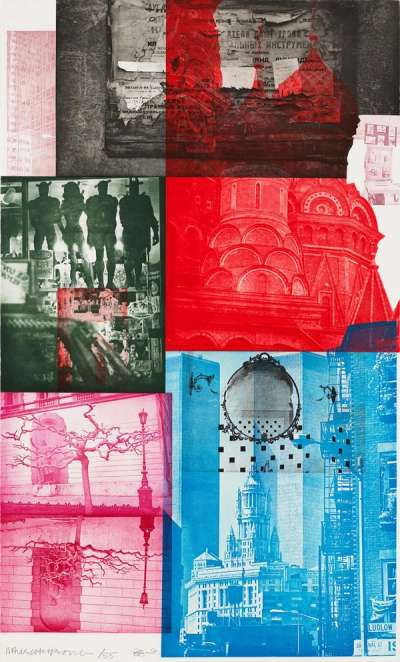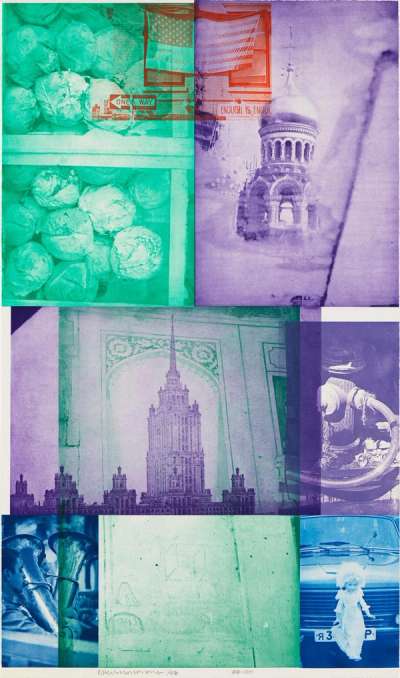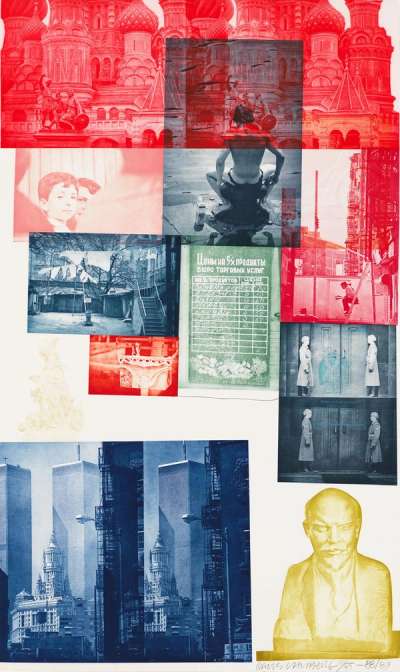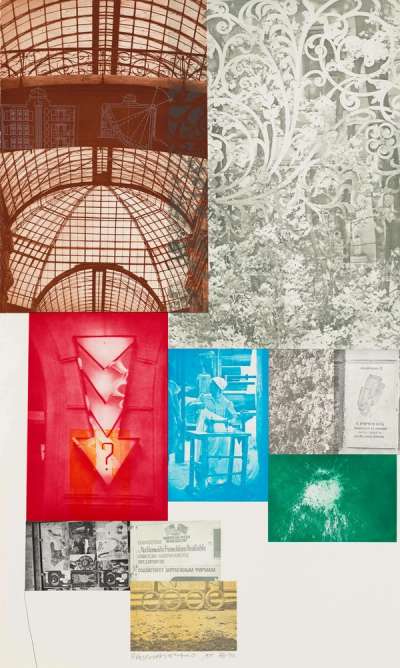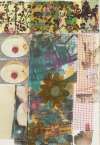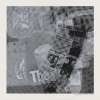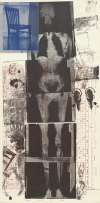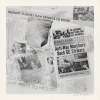Soviet
American Array
Robert Rauschenberg's Soviet American Array print series, crafted during the late 1980s and early 1990s, is a vivid exploration of cultural and political themes through the juxtaposition of imagery from two erstwhile Cold War adversaries. The series showcases Rauschenberg's mastery in blending diverse visual elements that reflect the complex relations between the Soviet Union and the United States.
Robert Rauschenberg Soviet American Array For sale
Soviet American Array Value (5 Years)
Sales data across the Soviet American Array series by Robert Rauschenberg varies by print. While standout works have sold at auction for up to £12930, other editions in the series remain rare to market or have yet to appear publicly for sale. Of those tracked, average selling prices have ranged from £8960 to £8960, with an annual growth rate of -2.55% across available data. Collectors should note the discrepancy in performance between more visible and lesser-seen editions when considering value potential in this series.
Soviet American Array Market value
Auction Results
| Artwork | Auction Date | Auction House | Return to Seller | Hammer Price | Buyer Paid |
|---|
Sell Your Art
with Us
with Us
Join Our Network of Collectors. Buy, Sell and Track Demand
Meaning & Analysis
Robert Rauschenberg’s Soviet American Array series is a poignant reflection on the dynamic interplay of politics, culture, and art during a period marked by significant global tension and transition. Each piece within the series utilises Rauschenberg’s signature technique of combining found imagery and abstract forms through photomechanical silkscreen processes, creating a rich tapestry that narrates the multifaceted dialogue between two superpowers.
The series is not merely an artistic exploration but also a historical commentary, capturing the essence of the late Cold War era's complexity. Rauschenberg's choice of imagery, ranging from political figures and cultural icons to everyday objects and landscapes, invites the viewer to consider the similarities and differences that defined the American and Soviet experiences.
Soviet American Array is particularly noted for its bold, graphic aesthetic, which is both visually striking and thematically layered. Rauschenberg’s ability to collage disparate elements into a coherent whole echoes the potential for unity and understanding, suggesting a reconciliatory function of art. By integrating symbols and scenes from both nations, he crafts a visual dialogue that encourages a reevaluation of the perceived dichotomy between East and West during the Cold War.
